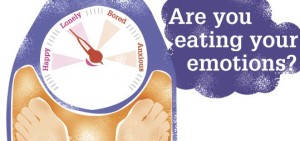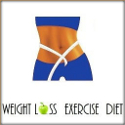-
The “Magic Prescription” for Weight Loss
Tuesday, March 25th, 2025by Suzanne Steinbaum, M.D.
As a cardiologist, I often find myself in a position where I am compelled to advise people to lose weight and/or get in shape, and I always used to believe there was no trick or secret formula to doing this.
It is straightforward, I told my patients. You eat a healthy diet by choosing nutrient-dense foods and choosing foods consistent with a Mediterranean diet.
 You eat X for breakfast, Y for lunch, and Z for dinner. You incorporate whole grains, fruits, vegetables, legumes, low fat dairy and foods high in omega 3 fatty acids like olive oil, avocado and flax seeds.
You eat X for breakfast, Y for lunch, and Z for dinner. You incorporate whole grains, fruits, vegetables, legumes, low fat dairy and foods high in omega 3 fatty acids like olive oil, avocado and flax seeds. I typically went on to explain simple sugars and the glycemic index, and how critically important it is to eliminate all simple sugars from the diet.
I then discussed trans-fats and how detrimental they are to cholesterol and to the development of plaque in the arteries, and I explained the disastrous effect processed foods have, not only on the waistline, but also on the heart.
I talked about the balance of calories in and calories out, and discussed logistically when it is most beneficial to eat these calories during the day.
Then, I covered fitness. This, I told my patients, is similarly straightforward.
All they had to do was follow the guidelines for exercise as established by the American Heart Association: 150 minutes per week of moderate-intensity exercise, divided into 30-minute increments five days per week.
On any given day, I told them, they could divide those 30 minutes into three 10-minute segments, during which they would increase their heart rates.
That’s it. Follow these guidelines, and you will lose weight and get healthier. No tricks, no magic.
However, as I made these lifestyle prescriptions, for patient after patient, I watched their difficulty in implementing this “simple” plan … What was I missing?
Diet Failure: Why Most People Give Up
For example, I have a patient, who seems always to be on a diet – usually the one currently popular in the latest best-selling book. Every time, she wraps herself in the program, she counts points, calculates amounts, fusses over whether something is a protein or a carb, and feels constantly hungry.
She frets along in this mode until she is over it. Then she quits and goes back to life as she knows it, with all her ‘regular’ detrimental habits. She explains this to me by proclaiming emphatically: “That diet didn’t work for me.”
Inevitably, I answer back: “You have to stick to it in order for it to work.” To which she replies, “Nothing ever works for me.” To which I reply, “Anything that anyone doesn’t stick to, doesn’t work for them either.”
After going through this with her several times, I began to realize that something wasn’t working. The diets she chose to follow were mostly sound. The workout plan she attempted to maintain was a good one.
 So why was she failing? What was I missing? Some key piece of information that would help my patients succeed after failing over and over again?
So why was she failing? What was I missing? Some key piece of information that would help my patients succeed after failing over and over again?That’s when I realized that there is a trick. There is a secret. There is an element of magic in successful weight loss, and that’s the reason why only a handful of people succeed, where most fail. And don’t talk to me about melatonin for weight loss!
They don’t know about this magic element. They are missing the pixie dust.
I don’t use that metaphor lightly.
Forgive my orientation towards childhood metaphors (I am, after all, the mother of a young son), but remember in the play Peter Pan, when Tinkerbell dies, and the only way to bring her back to life is for the whole audience to clap, in order to prove that they do believe in fairies? And it works?
This was my ‘a-ha!’ moment.
Belief is the Secret to Successful Weight Loss
My patients who don’t succeed at getting fit and changing their poor dietary habits don’t believe they can change. This, my friends, is the magic element: belief.
If you truly believe in your plan to improve your health, if you embrace that it can work and that it will work, that is the key to compliance. Without it, you will never stick with your new plan.
Of course, there are other elements. You have to select a diet that you enjoy and that is sustainable for you. The same goes for the exercise you choose.
But once you’ve found a solid eating plan and a good exercise routine, you have to add that final dose of pixie dust. You have to believe.
Diet and Exercise: The Placebo Effect
There is a phenomenon in medicine called the placebo effect. Perhaps you’ve heard of it. This is something that happens when a patient believes something will work – in many cases (more so than without the placebo), it does work.
The mind is powerful, and the belief that something will work actually effects physical change and healing.
You can take advantage of your mind’s power in a much more deliberate way. When you add the pixie dust of sincere, profound belief in your impending success and the soundness of your plan to your diet and exercise efforts, then you will succeed.
But you actually have to believe in that magic because starting a diet is exciting, but sticking to a diet is boring.
 During the slow tedium that will happen, struggling through the food plan or dragging yourself to the gym, you need to believe that you are effecting changes to your physical being so you can stay the course.
During the slow tedium that will happen, struggling through the food plan or dragging yourself to the gym, you need to believe that you are effecting changes to your physical being so you can stay the course. If you know with the certainty of a true believer that soon enough, the scale will show a change in your weight, your clothes will becomes looser, and you won’t get so out of breath anymore, then suddenly, you will recognize that you do feel better.
The scale does move. The clothes are looser. And you can make it all the way up the stairs without getting winded.
But until it happens, you need to suppress your doubts and just do it. Don’t let Tinkerbell die. Believe.
It’s the secret.
Some Advice on Choosing the Best Diet for You
A study published in the Journal of the American Medical Association looked at several major diets and which ones were most effective on weight loss and cholesterol reduction.
It included a fat restrictive diet (Ornish), a carbohydrate restrictive diet (Atkins), a balanced diet of protein, carbs and fats, and a point counting system diet, with calorie restriction.
In this study of 160 people, all of them lost weight and had a decrease in LDL cholesterol, C-reactive protein and insulin.
However, every single person who was successful stuck to the diet they were given, and those that stuck to it for one full year had the greatest weight loss and the most significant amount of success.
The challenge for most people isn’t knowing what to do. It is doing it, consistently and over the long term. And that takes a dose of magic.
I suggest that perhaps we all need to consider a reversal in the normal order of business. Instead of deciding to go on a diet, then deciding which one, then trying to stick to it (and likely failing), I suggest we look at our lives first.
 Figure out why we need a diet. What got us into this situation? Why aren’t we eating well? Why aren’t we exercising? I suggest that we look at how we are living, working, and nurturing ourselves, so we can figure out where the disconnect is between health and the behaviors that support it.
Figure out why we need a diet. What got us into this situation? Why aren’t we eating well? Why aren’t we exercising? I suggest that we look at how we are living, working, and nurturing ourselves, so we can figure out where the disconnect is between health and the behaviors that support it. Binge-eating ice cream in the middle of the night isn’t about ice cream, after all. So, what is it really about?
Clear the path for change. Then, before you start a diet, even before you choose a diet, or an exercise plan, or whatever healthy habit you want to adopt, get out your magic wand.
Because the magic, you see, isn’t in the diet, or the food plan, or the exercise routine. The magic is within you.
You have to decide you can do it, and believe you can do it, before you can “just do it.”
Find your stumbling blocks, get your head clear, and look deep into your heart to find your inner strength. Then, believe in yourself.
This is the way to do it right and better, and to sustain it, so that “this time” is your final time. So that you can actually change.
When you finally realize that this is the magic, and the key to the life you’ve been trying to achieve, then trust me: There will be no stopping you.
(published September 19, 2013)
 Suzanne Steinbaum, M.D., is an attending cardiologist and the Director of Women and Heart Disease at Lenox Hill Hospital in New York City. Dr. Steinbaum has devoted her career to the treatment of heart disease through early detection, education, and prevention. She recently released her book, Dr. Suzanne Steinbaum’s Heart Book: Every Woman’s Guide to a Heart-Healthy Life, teaching all women how to lead the healthiest lives by living from the heart. Her unique perspectives on health, wellness and overall vitality by living a heart-centered life can be found at www.srsheart.com.
Suzanne Steinbaum, M.D., is an attending cardiologist and the Director of Women and Heart Disease at Lenox Hill Hospital in New York City. Dr. Steinbaum has devoted her career to the treatment of heart disease through early detection, education, and prevention. She recently released her book, Dr. Suzanne Steinbaum’s Heart Book: Every Woman’s Guide to a Heart-Healthy Life, teaching all women how to lead the healthiest lives by living from the heart. Her unique perspectives on health, wellness and overall vitality by living a heart-centered life can be found at www.srsheart.com.



